Ideas
Upon a Shifting Plate: Sharjah Biennial 13, Act II (Part 1)
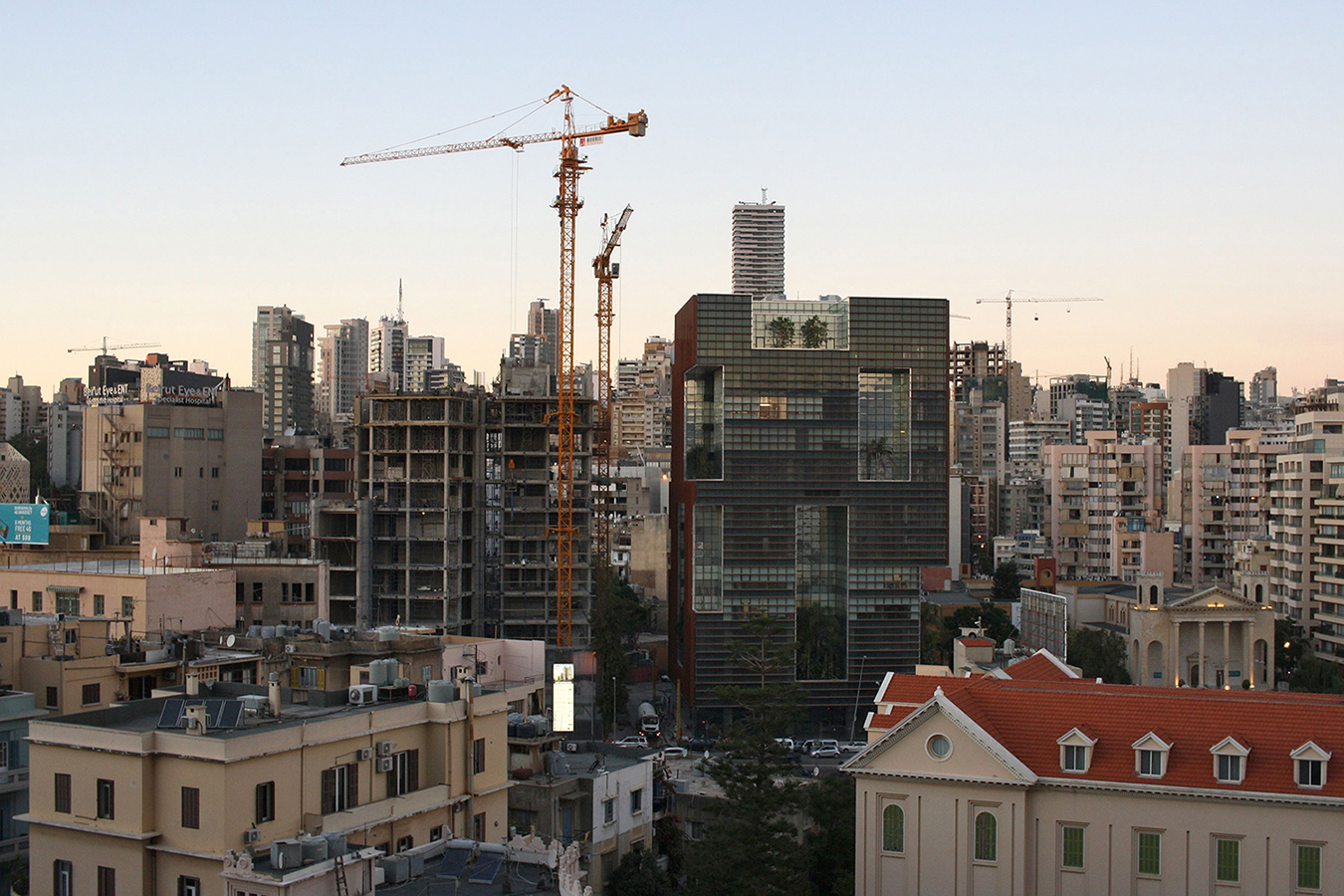

“So you’re here for Home Works?” a Beiruti friend asked me somewhat rhetorically. “No—I mean, yes, I’m in town for the Sharjah Biennial,” I replied. This same exchange would repeat itself over several days in Beirut in mid-October during Sharjah Biennial 13’s Act II program, “Upon a Shifting Plate,” which many in Beirut regarded as another edition of Home Works, the city’s roughly biennial festival of exhibitions, lectures and performances organized by Ashkal Alwan, the nonprofit foundation founded and directed by Christine Tohmé, who is also the curator of the Sharjah Biennial 13 (SB13) this year. So it may have been “Home Works” to Beirutis—a protective reflex, perhaps reflecting tensions over the city’s rapacious development—but on the posters and programs, it was SB13’s second “act” and the fourth of its “offsite” projects revolving around a set of keywords.
After earlier chapters this year on “water,” “crops” and “earth” (in Dakar, Istanbul and Ramallah, respectively), SB13’s Beirut program of walks, talks, panels and performances focused on “the culinary,” a word that implies much more than just food to mean the whole system of natural products that go into cooking as well as the cultures that emerge from the kitchen—“a gathering of myths and chemistries, of recipes that allow for the magical and the real to coexist,” as Tohmé wrote in the program pamphlet. Beirut is a city known for its rich, multifarious traditions of food, thanks to its many distinct populations and colonial histories, so it made sense that the culmination of SB13 focused on what emerges when water, earth and crops all combine—and what we then do with it.


On Saturday October 14, locals and visitors gathered at Ashkal Alwan’s dusky red-painted factory in the industrial Jisr el-Wati district—which is also rapidly gentrifying, with luxury high-rises sprouting from what is otherwise a fairly remote and desolate area of the city. Tohmé, as is her mien, delivered a rapid-fire welcome, gave thanks to her collaborators, and delivered a preamble decrying the problems of the region, even in Lebanon which she said remains the only place in the region where a real multiplicity of peoples is still possible. I later gathered that getting visas for participants (as well as for some visitors I talked to) is becoming even more difficult—always a barometer for regional tensions—particularly for those with Palestinian connections, along with Emiratis and Saudis who have been banned by their own countries from visiting since early 2016.

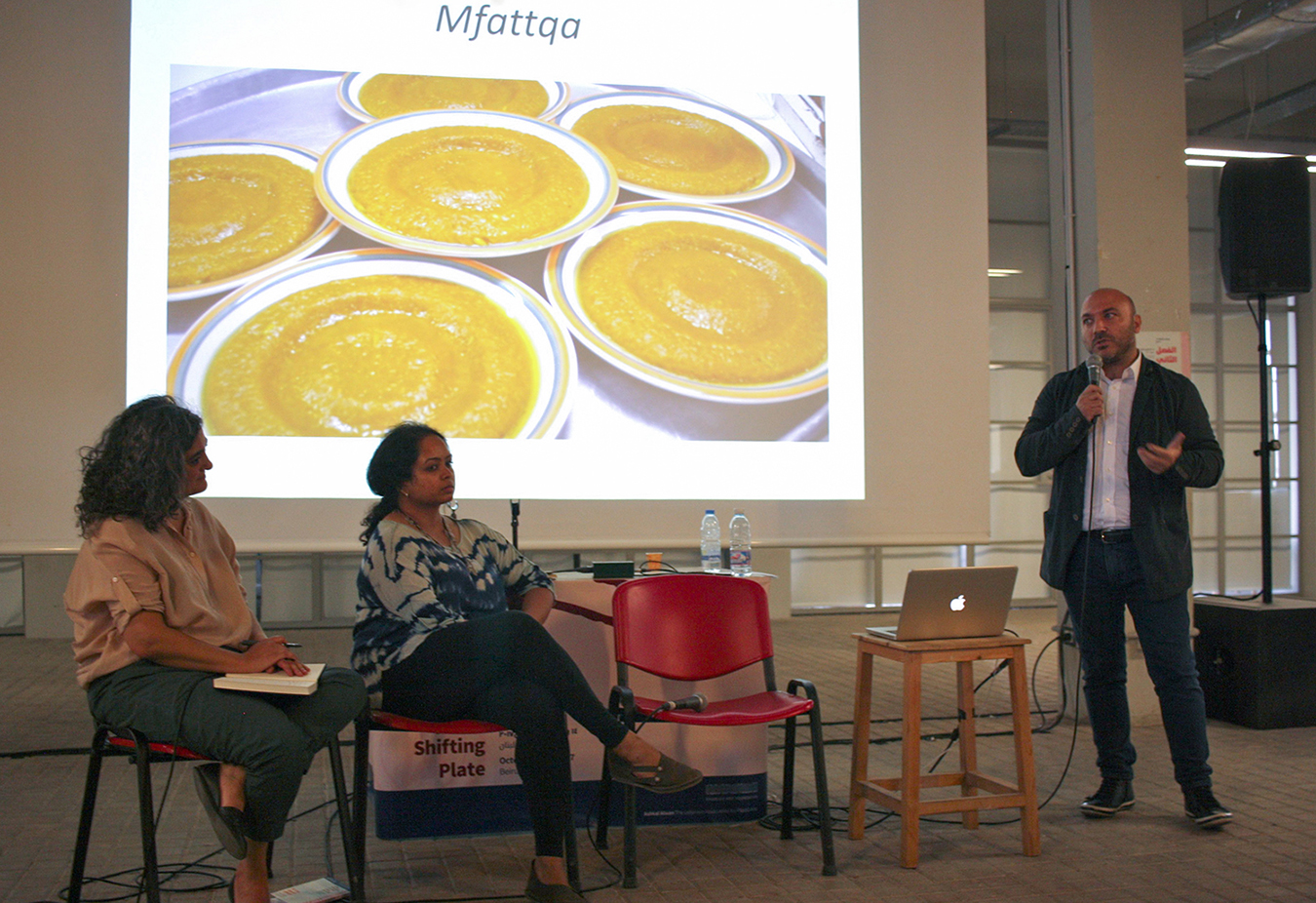
The first of the morning’s speakers was Iman Mersal, a poet and academic who delivered a presentation analyzing the preparation of moussaka recipes in various Arab cooking shows—though the nuances were hard to grasp for a non-Arabic speaker listening to a simultaneous translation. But generally it was a good opener, with the ideas about how food and language are deeply intertwined in their ability to communicate on multiple levels: both the individual and collective. The follow-up panel was missing Jerusalem-based writer Maya Abu al-Hayat, who I suspected had been a casualty of the visa restrictions though her absence wasn’t explicitly noted. First, academic Tarek el-Ariss made a presentation about the metaphors around the Lebanese dish mufattaqa, a labor-intensive dish of rice, tahini, turmeric, and pine nuts traditionally cooked in honor of the prophet Job, leading el-Ariss to call his hometown “a city of sadomasochism.” Deepa Bhasthi of the Forager Collective, spoke about the idea of the “day after,” both in terms of the conflicted use of leftovers in Indian culture and in political terms for the “day after” in the context of protests and revolutions. Moderator Rana Issa asked each of them interesting questions, but unfortunately it didn’t cohere as a discussion—perhaps the missing participant would have been the one to really bind together the speakers.
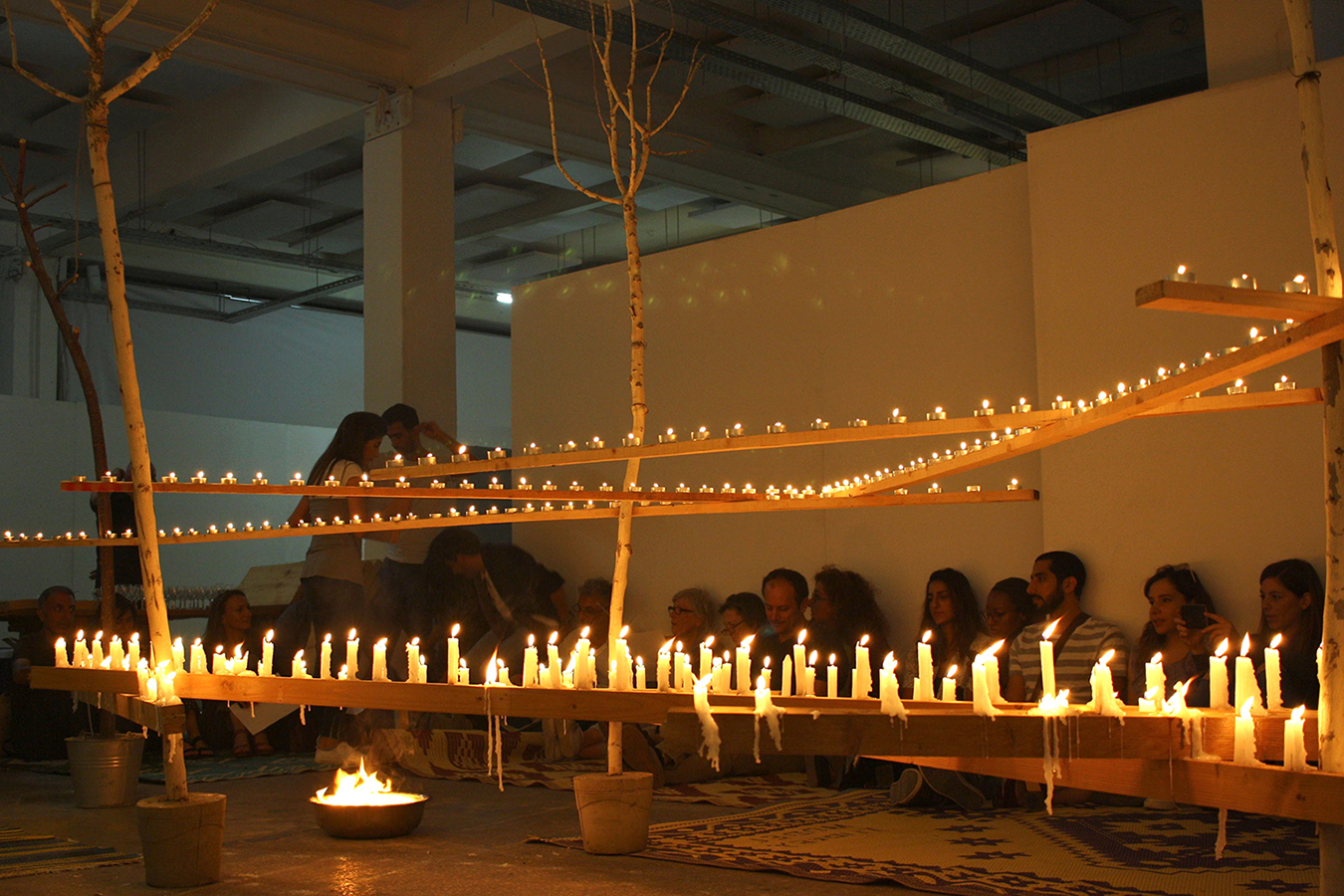
After all this talk of food was the program’s first “culinary performance” at the cultural space called Station, located across the street from Ashkal Alwan. I made a fateful, but professionally responsible, choice in opting for the more experimental of the two lunch options. The assembled crowd at Station was given a very fair warning that this would not be an event with food in the “conventional” sense, and that the things we would be tasting would not in anyway satiate our hunger. Yet even that proved to be a bit of an understatement. Organized by a group called Spurse, this culinary performance, titled Eating into Future-Past Cosmologies – Tasting the Future had about 60 people sitting on woven mats in a space lit with candles and burning incense.
The first item we tasted were rocks from the sea (salty, no surprise), which we were instructed to suck on, followed by sea glass (lemony and bitter) and then a mountain rock (earthy, naturally). We were supposed to write down the first words that came to mind during these mini-“courses” (26, in all), and there were attempts by organizers to have us read them aloud to make what was supposed to be “a collective poem.” Interestingly, from this creative crowd, the reactions were incredibly banal. “Salty,” for instance, was the most common association with sea rocks. That part of the event petered out with the lackluster attention to language, and a restlessness and increasingly “hangry” audience. After we were done with the amuse-bouche of stones came—my favorite—a small dollop of river mud, which was beautifully served on a rock and whose flavors we were invited to contemplate. My notes read: “fine grainy texture, flavors of concrete, ash, pine sap and diesel exhaust,” which is a pretty accurate expression of the local terroir. Other memorable unpalatable moments were a “cocktail” made with seawater—complete with sea grit at the bottom—and the “real food” served on raw wooden planks, including burnt fish bones, cold foraged river greens, a chickpea juice with an insanely bitter powder of ground bark, and more lightly fermented cocktails from mountain cactus and wild plums. Much of it was incredibly challenging in its flavors and thoroughly unappetizing as food, but that of course was the point—to experience the landscape of Lebanon through our sense of taste. (Mind you, there had been a side-discussion already that morning about how polluted the waters of the eastern Mediterranean are, though we were told that what we were tasting was “hygienic in a conventional sense”).
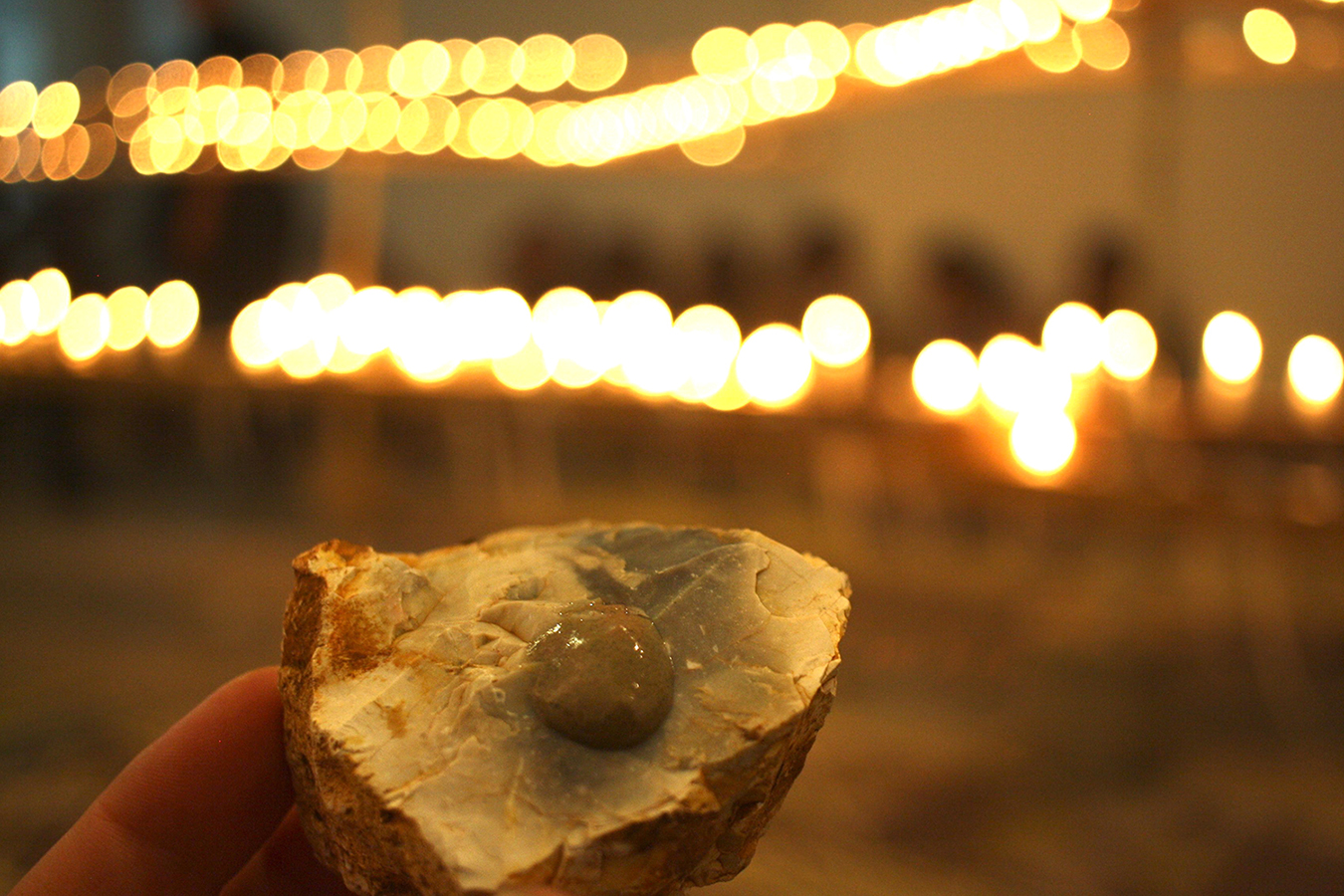
More than half of the participants left within an hour—even before our host Iain Kerr’s riff about how hierarchical societies are all grain-based whereas more egalitarian societies eat primarily roots, and how foraging is a way for us to create an important dependency on our environment. I also found the exit once we passed the two-hour mark. But I ate the dessert of stewed wild plums with a wild plum “sorbet” (cold, bitter and mushy in that rotting fruit kind of way), which the remaining 20 or so people agreed actually wasn’t so bad, even “in a conventional sense.” Or maybe we were just starving and delirious from the fermented cactus and wild-sage beverages, and desperate for some caloric intake.
What left an even more bitter taste was the sanctimony of Kerr, who would scold audience members if they found certain tastes unappetitizing by saying things like, “We are not interested in food that tastes good, or that is processed to the point of palatability” (check) and “We hope to leave you hungry” (check check). At one point, Kerr said something like “That’s just the capitalism in you talking” to an artist from Damascus whom I was sitting next to, which, no matter the larger intentions of the project to decolonize our tongues, just smacked of evangelizing, Euro-American cultural superiority. (The muscles in my face that I use to grimace had begun to hurt by the end.) I started to wonder if this is what much of contemporary art can seem like to people: pretentious, ungenerous, tedious, self-congratulatory and then smug in its refusals of even a modicum of basic human hospitality as it attempts to convert the unenlightened. Fortunately, there was time for food in a “conventional sense” before the two openings that evening—which I’ll write about separately in part two of this blog.

The second day of talks and performances riffed further on the culinary universe and its savage inverse, starting with Sahar Mandour’s reflections on the rash of nearly 400 Egyptian women who during the years of Hosni Mubarak’s dictatorship “developed a taste for crime,” and had killed their oppressive husbands in quite brutal fashions. Monika Halkort’s Jacques Ranciere-inflected text on the idea of the recipe as a kind of proto-political formula presaged a coming shift in the programming from human body to political body. The lunch performance by Candice Lin that day did feature food “in conventional sense”—one chicken leg and one half roasted eggplant apiece. The artist had asked us to bring a sheet of paper of some personal significance, which we then sprinkled with various herbs and woods, according to a menu of aspirations, such as cherry wood for good fortune, mesquite for healing or sage for cleansing. Lin or her assistant then burned the paper for us in a motorized bong-like contraption that blew the smoke of our aspirations onto the dishes containing our food, thereby consecrating our sustenance with the toxins of our wished-for good fortune.
The title of the talk after Lin’s lunch project seemed like an apt description of my experience of the programming to that point—“Hunger and Hallucination”—but was, in all seriousness, a beautifully written and harrowing meditation by Lina Mounzer on the famine that devastated Lebanon, Syria and greater Palestine between 1915 and 1919. Like all famines through human history, Mounzer insisted, it was caused intentionally—in this case by the British and French military blockade of the Ottoman-controlled Levant—and exacerbated by a plague of locusts that chewed up every remaining blade of grass in the Levant during the summer of 1915. Mounzer’s retellings of local tales of mothers cooking their dead children and her descriptions of what happens to the body as it dies of starvation were viscerally felt. Interestingly, she squarely singled out the Beirut grain trader Michel Sursock as a primary culprit in—and major profiteer from—the mass starvation that in some areas of Mount Lebanon killed half the population.
The tone shifted to humorous with James T. Hong’s talk, “On Nietzsche’s Second Brain: All Prejudices Come from the Intestines,” in which the filmmaker took one line from Friedrich Nietzsche’s last book Ecce Homo (1888), “All prejudices come from the intestines,” and then analyzed how presciently accurate Nietzsche was. Hong used recent science to illustrate the new consensus that the neural networks of the digestion system operate at a faster speed than the mental pathways of our conscious thoughts, suggesting that humans really are first guided by their “gut impulses.” In the process, Hong reveled in the humorously euphemistic discussion of fecal transplants and how, potentially, moods and mental problems like depression might be cured by altering the balance of the bacterial content of the intestine. He also proposed that perhaps Nietzsche didn’t go insane from syphilis, as the philosopher’s biographers have speculated, but from the affects of the many extreme diets he put himself on to cure other ailments.

In another “hanger”-inducing twist of programming, in the evening, I joined a “dinner performance,” A Tale of Trash Mountains, Garbage Rivers, and Migratory Birds, by Franziska Pierwoss and Sandra Teitge, on the esplanade right in front of the ornate, Orientialist-Venetian-style Sursock Museum in Achrafieh. Mounzer’s earlier descriptions of how one of Beirut’s leading families had gained its wealth was still very much on my mind. Some of us from the international press were invited to participate, even though it was an event that was supposed to take place entirely in Arabic. We were all assigned seats at small tables under microphones, and we were meant to listen to various experts and figures involved in Lebanon’s trash crisis of recent years and discuss potential solutions.As we were served a menu of four courses all made from leftovers, including “Bizer Gazpacho” (Cold Seed Soup) and “Siyadiye Zayba” (Mercury Fish with Rice), I learned that the trash problem is still ongoing in much of the country; and the government has only taken care of Beirut because that’s where the attention and activism had been focused. The people at my table included a gentleman who introduced himself as Sami and runs a private recycling company that had contracts for household waste from certain municipalities; Waleed, a designer who runs an “upcycling” manufacturing plant that uses plastic advertising banners to make bags and furniture; as well as a couple of activists and two other people who were Arabic speakers but not locals familiar with the issues.
While journalist Foutoun Raad moderated the speakers, there was a confrontational exchange with a representative of the municipality, followed by many other people talking about solutions—some of which was graciously translated for me by tablemates, but ultimately it seemed entirely inappropriate that I was there. I don’t doubt the immensity of the problem in Lebanon—it was also a topic discussed in the SB13 offsite project in Ramallah, because the Palestinian Authority has its own landfill and trash crisis at the moment—but as an outsider to the city, it seemed voyeuristic to get involved in parochial politics, and I had the impression the whole elaborate occasion was a set-up to put the municipality representative on the spot. I really wanted nothing to do with that performance of politics either.
I attended several other performances in the days to come, when the programming became less about “the culinary” and more about politics. The first of these, on Monday night, was Rabih Mroué’s new theatrical piece So Little Time, which was performed by his longtime collaborator Lina Majdalanie. The first half of the piece featured Majdalanie telling the story of Deeb al-Asmar, a university student who joined the Palestine Liberation Organization in 1969 and who was considered the first Lebanese “martyr” for the Palestinian cause—even earning a monument in 1971 in a prominent Beirut square. The trouble was, however, that al-Asmar was returned alive in 1974 in a prisoner swap with Israel, putting him in the tragicomic position of being a “living martyr.” As Majdalanie was recounting this history on stage, she was dissolving snapshot photographs of herself and Mroué in a liquid bath—with images of this process projected onto a screen—in a gesture of erasure of the living (though why this was done using personal snapshots, I never fully connected to the story). In the second part, the narrative switched to the first person, with Majdalanie narrating al-Asmar’s descent into poverty and insanity while the idea of martyrdom was adopted by Hezbollah during the 2006 war with Israel. Things lost their focus in the tangle of Lebanon’s current politics, as did the dramatic humor and pathos of al-Asmar’s story, paradoxically, when it was told in the first person.
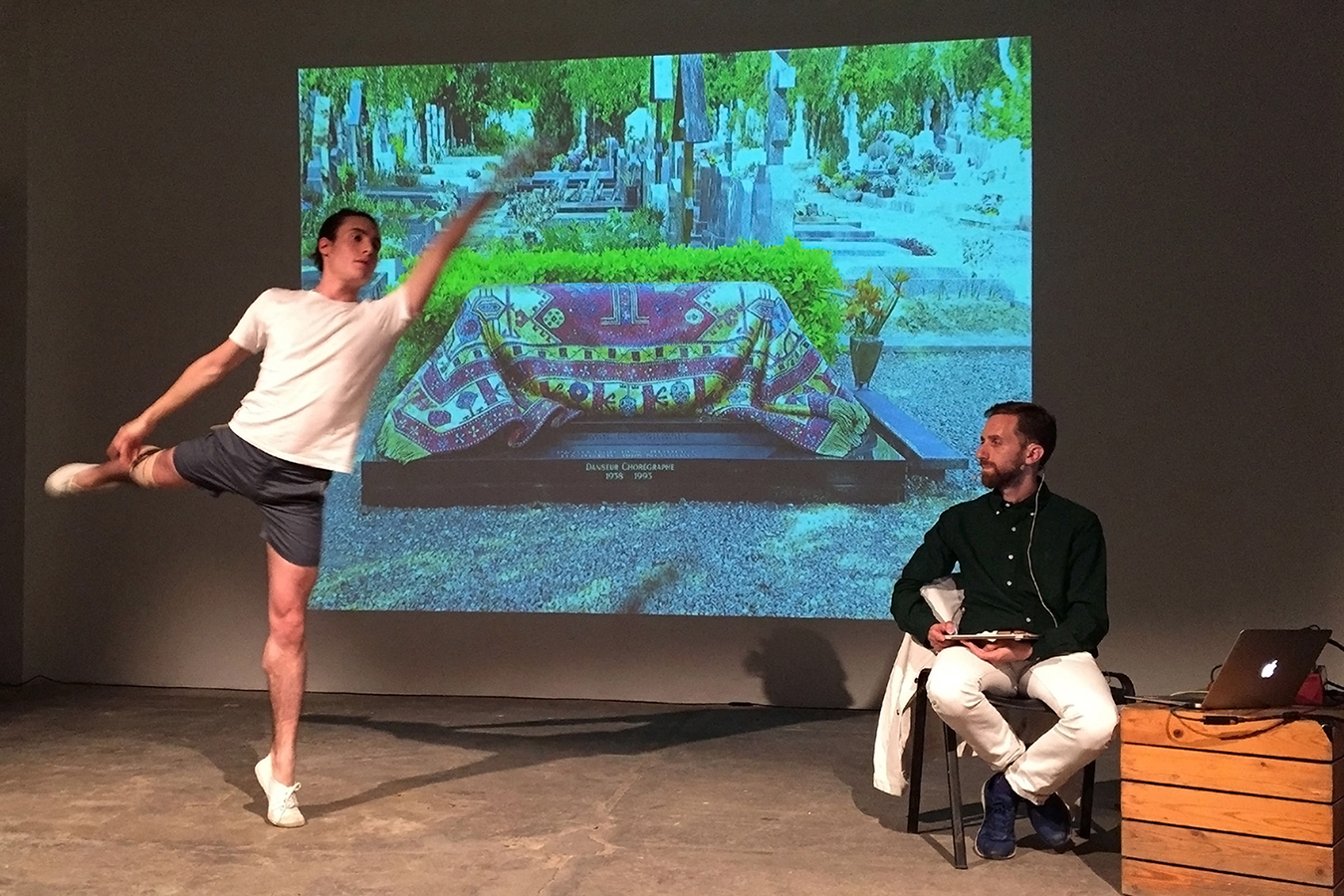
The following night’s event, Christodoulos Panayiotou’s lecture-performance Dying on Stage, was more rewarding. In terms similar to Mroué’s, Panayiotou traced the tensions between life and image, stage and reality, looking at the concept of tragic irony as it is realized in dramatic productions, when audience and actors alike know the narrative direction but are nonetheless captivated by the vicious circumstances that lead to the end. Panayiotou then tracked how this theatrical sense of tragic irony spills over into real life. Using videos available on Youtube, Panayiotou narrated famous passages from ballet, film and concerts in which people die on stage, first in figurative manner and then increasingly in a literal way, beginning with Rudolf Nureyev’s 1992 restaging of the Bolshoi’s La Bayadère at the Paris Opera as he was approaching his death the following year from AIDS.
For full dramatic effect, Panayiotou’s collaborator Jean Capeille rendered a live, unaccompanied version of the death scene of the temple dancer Nikiya. As Panayiotou’s chronicle continued, the instances ranged from the humorously paradoxical—as when Jim Henson’s character Big Bird sings at the puppeteer’s own funeral—and fascinatingly, as with Sarah Bernhardt staging her own death photo almost 20 years before she passed away, in a scene inspired by a painting of Ophelia, whom the actress became famous for refusing to play on stage, becoming instead the first woman to perform as Hamlet. Panayiotou has been continually adding stories and footage to this performance—he said he has close to ten hours of material—but the abbreviated version ended with watching a very high Nina Simone struggle to perform on stage and then opera singer Ambrož Bajec-Lapajne singing Franz Schubert’s Gute Nacht during brain surgery while he fades in and out of consciousness. There was real nourishment in Panayiotou’s humanism and I left hungry for more.
HG Masters is ArtAsiaPacific’s editor at large.
Sharjah Biennial 13 Act II’s “Upon a Shifting Plate” took place on October 14 and 15, 2017.
To read more of ArtAsiaPacific’s articles, visit our Digital Library.







